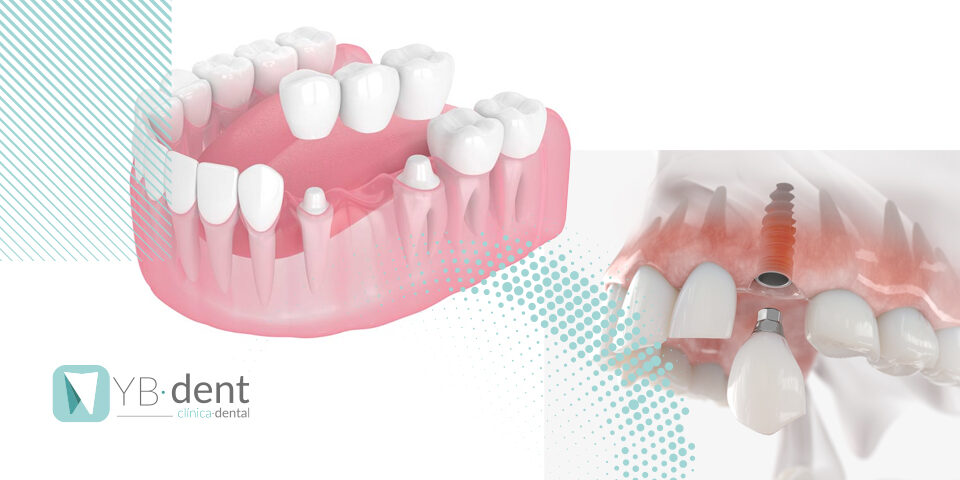Todo sobre los dientes de leche

Todos sabemos la existencia de los dientes de leche, sin embargo, hasta que no llega a nuestra familia un nuevo peque no nos paramos a pensar en su importancia. Pero ¿conocemos realmente todo lo que implican los primeros dientes?
En Clínica Dental YbDent, tu dentista de confianza, te contamos todo sobre los dientes de leche para conseguir una mordida fuerte y sana en los más pequeños. Estos dientes duran hasta los seis años y ayudan al niño a:
- Comer y masticar sin molestias, por eso debemos evitar las caries.
- Aprender a hablar haciendo un uso correcto de la fonética.
- Funcionan de guía para los dientes definitivos ya que mantienen el espacio adecuado, mientras estos se están formando debajo de ellos para que puedan salir correctamente.
- Ayudan a desarrollar los músculos y de los maxilares.
- Permiten el crecimiento sano de los dientes definitivos. Esto se debe a que el cuerpo reabsorbe las raíces clasificando sus minerales para terminar de formar los dientes de adulto.
Reciben diversos nombres puesto que podemos escuchar que alguien se refiere a ellos como dientes de leche, dientes primarios, dientes caducos o dientes temporales y la mandíbula de un bebé suele estar compuesta por 20 de estos dientes.
¿Cuándo salen los primeros dientes?
Los dientes de leche siguen un orden determinado para construir una estructura y puede que veamos la primera punta en las encías del niño a los seis meses de edad. Pero no tendremos que preocuparnos si esto aún no ha sucedido ya que lo normal es que empiecen a salir entre los seis meses y el año.
Síntomas de la erupción de los dientes
Los síntomas que nos indicarán que el niño está experimentando la salida de los dientes no son agradables para él, por lo que el principal protagonista será el llanto causado por la erupción y apertura de las encías. Además, lo más probable es que sufra un constante babeo que pueda desembocar en tos y en la irritación de su barbilla por lo que deberemos controlar este síntoma y secar continuamente con un papel suave para disminuir sus dolores.
Por otro lado, un mecanismo de defensa que tiene el ser humano ante este portento es mostrar una posición negativa a la hora de comer. Aunque el niño no se sabe expresar, sabe que lo que le está causando molestias y dolor es la boca por lo que no querrá hacer uso de ella para evitar que aumente.
¿Cómo calmar el dolor?
Para calmar el dolor del niño lo que podemos hacer es:
- Masajear suavemente las encías para contrarrestar la presión
- Visitar al odontopediatra para que revise la erupción y si es necesario que nos recomiende algún calmante
- Ofrecerle comidas y bebidas frías
¿Cómo cuidar los dientes de leche?
Como hemos visto, es muy importante que los dientes primarios se conserven sanos hasta el momento en el que caen para asegurar una mejor mandíbula de dientes permanentes al niño. Pero ¿Cómo cuidamos los dientes de leche?
Pues bien, los pasos que recomendamos para mantener una buena higiene bucal de un bebé son:
- Limpiar las encías y la parte interna de las mejillas después de cada comida con una gasa húmeda.
- Limpiar los primeros dientes con un cepillo dental adecuado para bebés.
- Que el bebé no duerma con biberón.
- No abusar de chucherías o azúcares y que el niño adopte una dieta rica en frutas y verduras que le aporten minerales y vitaminas.
- Visitar a su odontopediatra para realizar una revisión dos veces al año, es decir, cada seis meses.
Estos dientes temporales caen sobre los seis años cuando los definitivos empiezan a empujar, sin embargo, muchos niños sufren una pérdida prematura debido a golpes o caídas y su hueco no se volverá a completar hasta que el diente permanente esté formado, por lo que deberemos tener cuidado para que no tenga problemas de fonética o mordida a causa de su pérdida.



